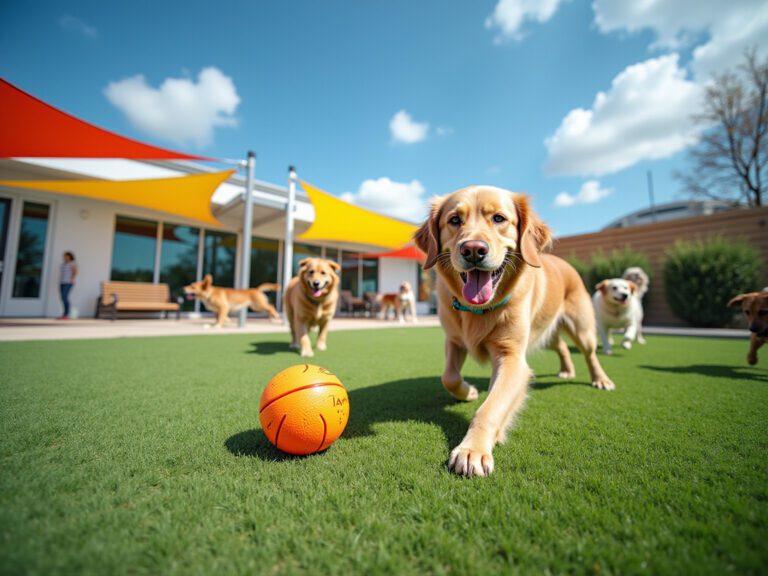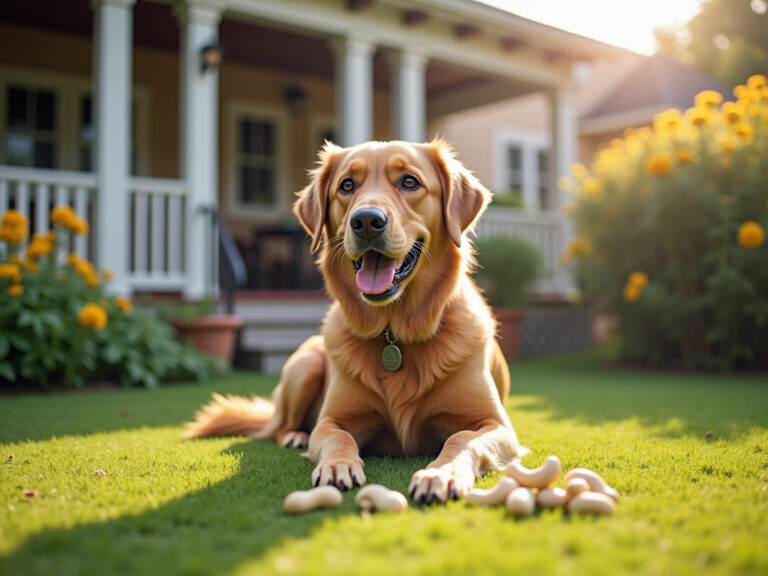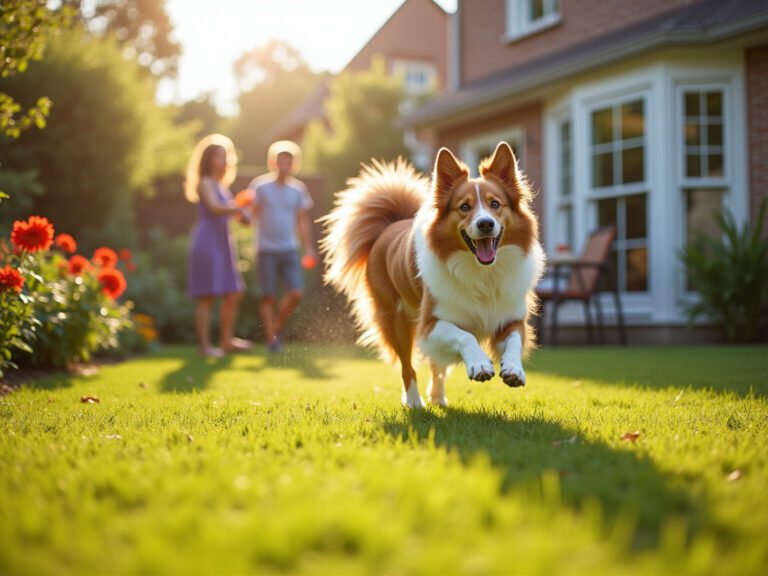5 Steps to Choose the Right Dog Winter Coat for Your Pet
Overview
Choosing the right winter coat for your furry family member is essential. Consider factors such as:
- Breed type
- Age
- Health
- Weather conditions
It’s also crucial to ensure a proper fit through accurate measurements. This article highlights these important considerations and emphasizes the significance of selecting a coat made from suitable materials and features. By doing so, you can keep your dog warm and comfortable during the chilly months ahead.
Introduction
Selecting the right winter coat for your furry family member is not just a choice; it’s a significant decision that directly influences their comfort and well-being during the colder months. With a diverse array of breeds and coat types, it is essential to understand the specific needs of each pet to ensure they remain warm and protected.
Many pet owners often grapple with questions about:
- The necessity of a coat
- The ideal features to look for
- How to gently introduce this new garment to their beloved companions
This guide will thoughtfully navigate through the essential steps, helping dog owners make informed choices that ensure their cherished pets are cozy and safe all winter long.
Determine the Need for a Winter Coat
To determine if your furry family member needs a winter coat, consider these important factors:
-
Type and Size: Smaller breeds, short-haired canines, and those with low body fat are particularly vulnerable to the cold. Breeds like Chihuahuas and Greyhounds often require extra warmth due to their body composition. Additionally, breeds such as the Chinese Crested, which has little to no fur, benefit from wearing a dog winter coat for those chilly winter outings.
-
Age and Health: Puppies and older dogs face challenges in managing their body temperature, making them more susceptible to cold conditions. For dogs with existing health issues, consulting a veterinarian is essential to assess their specific needs. As noted by Small Door’s medical professionals, “If you need to put a cold weather jacket on, that may be a good indication that your dog should wear one as well.”
-
Weather Conditions: Take a moment to evaluate the winter severity in your area. When temperatures dip below 32°F (0°C), it’s wise to consider a dog winter coat for most dogs, especially those with minimal natural insulation. Furthermore, once the temperature drops below 20°F (-6.6°C), keep an eye on your dog for signs of discomfort, as they may be at risk for hypothermia and frostbite.
-
Behavioral Signs: Keep watch for signs of discomfort in your dog, such as shivering, lifting their paws off the ground, or showing reluctance to go outside. These behaviors are strong indicators that your dog may benefit from wearing a dog winter coat for warmth. Additionally, consider protective footwear, which can safeguard their sensitive paw pads from snow, ice, and harmful de-icing agents.
Understanding these factors can help ensure your dog remains safe and cozy during the colder months. Remember, your pet’s comfort is our top priority, and we are here to help you create a nurturing environment for your beloved companion.

Assess Breed and Coat Type Requirements
To effectively assess your furry family member’s breed and coat type, consider these nurturing steps:
-
Research Your Type: Investigate the specific characteristics of your dog’s breed. For instance, breeds like Alaskan Malamutes and Siberian Huskies boast dense fur and typically do not need extra layers, while short-haired varieties such as Beagles and Boxers might need a dog winter coat for additional warmth during colder seasons. Notably, hairless breeds like the Chinese Crested need thick coats to stay cozy in chilly weather.
-
Examine Coat Type: Identify if your dog has a single or double coat. Double-coated breeds, like Golden Retrievers, generally have better insulation against frigid temperatures, but a dog winter coat can still enhance their resilience in winter conditions. According to Dr. Susan Jeffrey, a veterinarian, ‘Some canines will hold up their paws when they get cold and sometimes even refuse to walk.’ Other dogs may shiver, signaling their need for warmth.
-
Consider Activity Level: Evaluate your dog’s activity level. Active dogs that enjoy outdoor play may generate enough body heat to remain warm, while less active pets might require a dog winter coat for additional insulation to stay comfortable in cold weather. It’s crucial to watch for signs of overheating, such as excessive panting or drooling, especially if they are dressed in cold weather clothing.
-
Consult Resources: Utilize breed-specific resources or seek advice from your veterinarian to gain insights into the unique seasonal gear needs of your dog’s breed. This can help ensure that your pet is adequately protected against the elements. Remember, dogs should not be left outdoors during severe temperatures, and their cold weather clothing should be checked for a suitable fit to prevent discomfort. Let’s work together to create a nurturing environment for your beloved pet.

Measure Your Dog for the Perfect Fit
To ensure your furry family member is well-equipped for winter, precise measurements are essential for choosing the appropriate garment. Follow these steps for a perfect fit:
- Gather Tools: Use a flexible measuring tape or a piece of string and a ruler for precise measurements.
- Measure Length: Have your dog stand on all fours. Measure from the base of the neck (where the collar sits) to the base of the tail. This length is crucial for determining the garment’s overall size.
- Measure Girth: Wrap the measuring tape around the widest part of your dog’s chest, just behind the front legs. This measurement is essential for ensuring the garment fits comfortably around the body, preventing discomfort and allowing for movement. Remember, dog garments can prevent hypothermia after outdoor play or exposure to wet conditions.
- Measure Neck: Measure around the neck where the collar sits, ensuring it’s snug but not tight. A well-fitted collar allows for two fingers to fit comfortably between the collar and your dog’s neck. Regularly monitoring collar fit is important, especially during growth or weight changes.
- Consult Size Charts: Use the measurements to refer to the size chart of the brand of outerwear you are considering. Remember, sizing can vary significantly between manufacturers, so always refer to the specific brand’s chart for the best fit.
Well-fitting dog winter coats are crucial for your dog’s comfort and safety, especially for breeds like Dobermans that require additional warmth during chilly months. As mentioned by pet apparel experts, “A well-fitted garment should allow your dog to move freely and comfortably, enhancing their outdoor experience.” By adhering to these measurement guidelines and taking into account the specific requirements of short-haired breeds, you can ensure your furry companion remains warm and comfortable throughout the colder months.

Evaluate Essential Features of Dog Winter Coats
When it comes to keeping your furry family members warm this winter, choosing the right dog coat is essential. Here are some caring considerations to help you make the best choice:
-
Material: Opt for outerwear crafted from waterproof and windproof materials like nylon or premium polyester. For example, the Ruffwear Vert Dog Jacket is constructed from 120-gram post-consumer recycled polyester, ensuring durability and protection against the elements.
-
Insulation: Look for jackets that feature effective insulation types such as fleece or down. The WeatherBeeta Premier Free Parka, with its 220-gram polyfill insulation, is perfect for colder climates, while lighter options may be ideal for milder temperatures.
-
Coverage: It’s important that the coat adequately covers your dog’s neck, belly, and back. The Hurtta Expedition Parka, for instance, is designed to envelop more of your dog’s body than typical outerwear, providing extensive warmth in severe weather.
-
Adjustability: Choose outerwear with adjustable straps or Velcro fastenings. The EMUST dog winter coat features elastic bands that allow for better fit adjustments, enhancing comfort for your pet. As noted by EMUST, this design allows for easy modifications based on your dog’s unique size and shape.
-
Reflective Elements: Consider coats equipped with reflective strips for increased visibility during low-light conditions. EMUST highlights that these reflective strips are especially beneficial for evening walks, ensuring your dog remains safe and easily seen.
By focusing on these vital characteristics, you can select a dog winter coat that not only keeps your dog warm but also ensures their comfort and safety during outdoor adventures.

Introduce the Coat to Your Dog Gradually
Helping your dog adjust to wearing a dog winter coat can be a rewarding journey for both you and your furry family member. Start with these gentle steps:
- Familiarization: Allow your dog to sniff and explore the garment before putting it on. This initial interaction helps them become accustomed to the new item and sets the stage for a positive experience.
- Positive Reinforcement: Use treats and praise whenever your dog interacts with the garment. This strategy fosters a positive association, making them more receptive to wearing it. As Dr. Jolee Stegemoller, DVM, wisely notes, “Coats do need to be laundered because they collect hair and dander and can be potential breeding grounds for bacteria, especially if put away damp after being in the snow.”
- Short Sessions: Begin by putting the garment on for brief periods, gradually extending the duration as your dog grows more comfortable. This gradual exposure is key to their adjustment and helps them feel secure.
- Monitor Behavior: Keep an eye out for signs of discomfort or anxiety. If your dog seems stressed, take off the garment and try again later, ensuring the experience stays positive and nurturing.
- Incorporate Play: Engage your dog in play while they wear the garment. Linking the garment with enjoyable activities can greatly increase their eagerness to use it, making the experience fun and memorable.
Veterinary experts recommend that the acclimatization process can take several days to weeks, depending on your dog’s temperament and past experiences with clothing. For instance, a case study on positive reinforcement techniques showed that dogs who were gradually introduced to wearing coats through play and treats adjusted more quickly than those who were not. By employing these compassionate techniques, you can ensure a smoother transition for your furry friend into their dog winter coat.

Conclusion
Choosing the right winter coat for your furry family member is essential for ensuring their comfort and safety during the colder months. Understanding the specific needs of your pet based on their breed, size, age, and health highlights that not all dogs require the same level of protection against the elements. A well-chosen coat can make a significant difference in your dog’s winter experience, allowing them to enjoy outdoor activities without the discomfort of cold weather.
In this guide, we emphasized key considerations, including:
- The importance of assessing your dog’s unique requirements
- Measuring for the perfect fit
- Evaluating essential coat features
- Gradually introducing the coat to your pet
Each step is crucial in selecting a garment that not only keeps your dog warm but also allows for ease of movement and comfort. The right materials, insulation, and adjustability can greatly enhance your dog’s winter outings, ensuring they stay cozy and protected.
Ultimately, prioritizing your dog’s needs during the winter months reflects a deep commitment to their well-being. By taking the time to choose an appropriate winter coat, you can provide your furry companion with the warmth and protection they deserve. As the winter season approaches, consider these insights and take action to ensure your dog is ready to embrace the cold with confidence and comfort.
Frequently Asked Questions
How can I determine if my dog needs a winter coat?
Consider factors such as the type and size of your dog, their age and health, the weather conditions in your area, and any behavioral signs of discomfort.
Which types of dogs are most vulnerable to the cold?
Smaller breeds, short-haired canines, and those with low body fat, such as Chihuahuas and Greyhounds, are particularly vulnerable to cold weather. Breeds like the Chinese Crested, which has little to no fur, also benefit from wearing a winter coat.
How do age and health affect a dog’s need for a winter coat?
Puppies and older dogs struggle to regulate their body temperature, making them more susceptible to cold. Dogs with existing health issues should be assessed by a veterinarian to determine their specific needs.
What temperature indicates that a dog should wear a winter coat?
When temperatures drop below 32°F (0°C), it’s advisable to consider a winter coat for most dogs, especially those with minimal natural insulation. If temperatures fall below 20°F (-6.6°C), monitor your dog for signs of discomfort, as they may be at risk for hypothermia and frostbite.
What behavioral signs indicate that a dog may need a winter coat?
Signs of discomfort include shivering, lifting their paws off the ground, or showing reluctance to go outside. These behaviors suggest that your dog may benefit from additional warmth.
How can I assess my dog’s breed and coat type requirements?
Research your dog’s breed characteristics and coat type. For example, double-coated breeds like Golden Retrievers may have better insulation but can still benefit from a winter coat.
What should I consider regarding my dog’s activity level in cold weather?
Active dogs may generate enough body heat to stay warm, while less active pets might need a winter coat for additional insulation. Always monitor for signs of overheating when they are dressed in cold weather clothing.
Where can I find more information about my dog’s cold weather needs?
Utilize breed-specific resources or consult your veterinarian for insights into the seasonal gear requirements of your dog’s breed.







